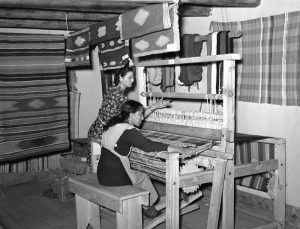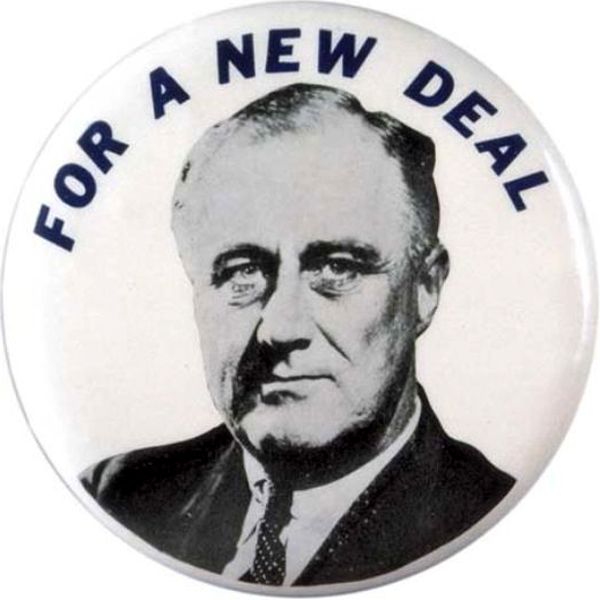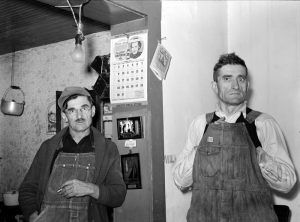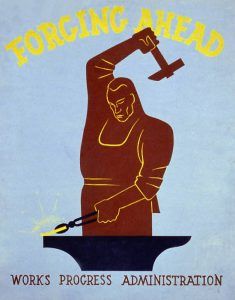The Works Progress Administration (WPA) was part of President Franklin Delano Roosevelt’s New Deal program during the Great Depression.
“The New Deal” refers to a series of domestic programs implemented during Roosevelt’s administration to combat the effects of the Great Depression on the U.S. economy. In addition to specific key economic programs, several of the most prominent New Deal initiatives focused on providing work relief to unemployed workers from all segments of U.S. society — from unskilled laborers to highly skilled artists, craftspeople, and technicians.
On April 8, 1935, Congress approved the Emergency Relief Appropriation Act of 1935, the work relief bill that funded the Works Progress Administration.

Spanish-American woman working for the WPA weaving a rag rug at Costilla, New Mexico by Russell Lee, 1939.
This national works program, renamed the Work Projects Administration beginning in 1939, was the largest and most ambitious New Deal agency, employing millions of people to carry out public works projects, such as creating parks, building roads and bridges, and constructing schools and other public buildings. The agency cooperated with state and local governments, which provided 10–30% of the costs. Usually, the local sponsor provided land, equipment, and supplies, with the WPA responsible for wages.
In the eight years the agency was active, its infrastructure projects included 40,000 new and 85,000 improved buildings. Of these were 5,900 new schools, 9,300 new auditoriums, gyms, and recreational buildings, 1,000 new libraries, 7,000 new dormitories, and 900 new armories. Other projects included recreational spaces, including 2,302 stadiums, grandstands, and bleachers; 52 fairgrounds and rodeo grounds; 1,686 parks covering 75,152 acres; 138 outdoor theatres; 254 golf courses; and more. Most of these are still in use today.
These projects included the Midway International Airport in Chicago, Illinois; the iconic Dock Street Theatre in Charleston, South Carolina; the Griffith Observatory in Los Angeles, California; Timberline Lodge in Oregon’s Mount Hood National Forest; and the River Walk in San Antonio, Texas.
On a smaller scale, the WPA employed musicians, artists, writers, actors, and directors in large arts, drama, media, and literacy projects. These included the Federal Art Project, Federal Music Project, Federal Theatre Project, and the Federal Writers’ Project.
During its brief existence, the WPA generated numerous documents of written histories, oral histories, guidebooks, fine prints, plays, posters, photographs, and architectural histories. Many of these documents are now in the collections of the Library of Congress.
As a result of low unemployment due to the worker shortage of World War II, the agency was discontinued in June 1943. It employed more than 8.5 million people who worked on 1.4 million public projects during its eight years of operation.
© Kathy Alexander/Legends of America, updated February 2024.
Also See:
President Roosevelt’s New Deal
Sources:



